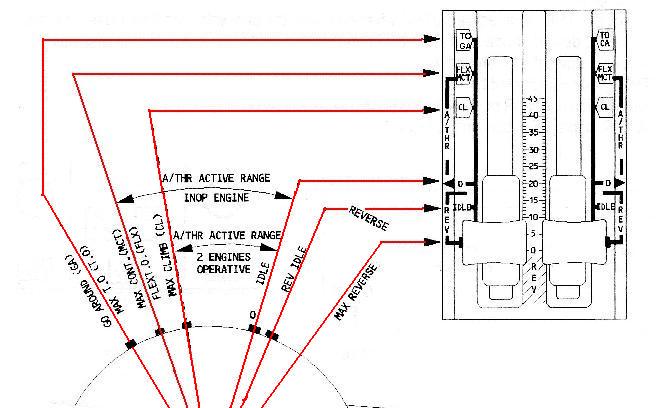
Copyright D.P. Browne 2011
The flight crew uses the thrust levers to do :
Thrust Levers
Thrust Levers Detents

Control the engine thrust
Arm and engage the A/THR system
Engage reverse thrust
Engage the Tales off and Go-
|
|
Meaning |
Mode consequence |
|
TO GA |
Maximum take off thrust |
Selects SRS mode on the ground, GA mode in the air |
|
FLX / MCT |
Max Continuous, or FLX thrust setting if a temperature entry has been made in the MCDU Performance Takeoff page |
Selects SRS mode on the ground, GA mode in the air |
|
CL |
Maximum Climb thrust |
Engages the A/THR after the Take off. This is the normal position of the thrust levers for the A/THR to be active. |
|
IDLE |
Idle thrust setting |
Disengages the A/THR |
|
MAX REV |
Maximum Reverse thrust |
|
Setting the thrust levers above the CL detent
This disengages the A/THR and leaves it in arm mode. The engine thrust is controlled directly by the levers, and MAN THR is displayed in the FMA. If the thrust levers are pushed to the TOGA detent, the thrust mode changes to TOGA .
Setting the thrust levers below the CL detent
This produces an ECAM warning of “A/THR Limited”. “THR LVR” is shown in green on the FMA and “LVL CLB” flashes in white on the FMA. Note that these effects are disabled in the FMGS Aid, as most commercial joysticks do not have any detents. .
Setting the thrust levers asymmetrically
This produces the FMA LVR ASYM until both thrust levers are set into the CL detent. This only applies when both engines are operative.
Setting the thrust levers to the idle position
This disengages the A/THR.





